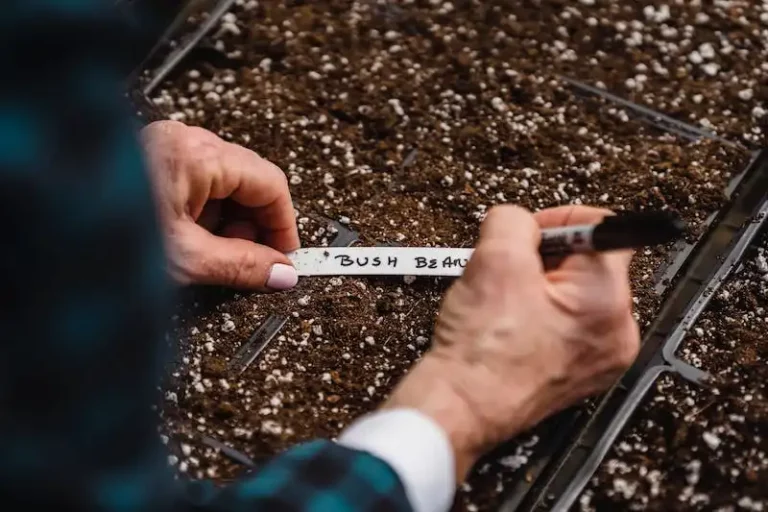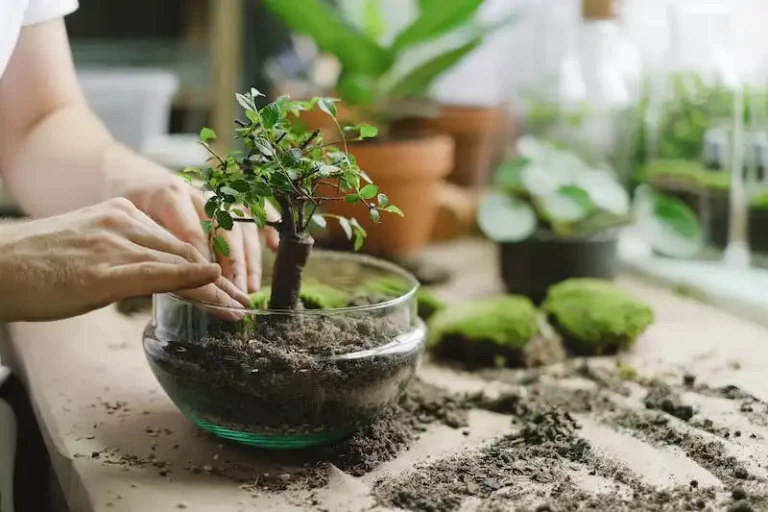Growing broccoli in your garden is a great way to increase the productivity of your home vegetable garden and enjoy the healthiest, freshest produce possible. Broccoli is a cool-season vegetable that can be planted in the spring or fall, depending on your location.
To grow broccoli, start by selecting a well-drained area in your garden that receives full sun. Broccoli plants prefer rich soils with plenty of organic matter, so make sure to amend your soil before planting. It’s also important to choose a location that is protected from strong winds, as broccoli plants can be easily damaged.
Plant your broccoli seedlings in the garden about four weeks before the last frost date in the spring. If you’re planting in the fall, start your seedlings about 10 to 12 weeks before the first expected frost. Broccoli plants should be spaced about 18 to 24 inches apart, as they need room to spread out and grow. You can also plant broccoli closely together and then thin out the smaller heads as they start to mature, leaving the healthiest plants to continue growing.
Broccoli plants require consistent moisture to grow well, so make sure to water them regularly, especially during dry periods. To reduce weed problems, mulch around the plants with organic material, like shredded leaves or straw. Be on the lookout for common broccoli pests, such as aphids or cabbage worms, and take steps to control them if necessary.
Broccoli heads are ready to be harvested when they are firm, full, and about five to six inches across. Cut the main head off just above the lateral buds on the stalk, and soon you’ll have side shoots that will continue to produce smaller heads. Harvest broccoli in the morning, while the heads are still cool and the moisture content is high.
Now that you know how to grow broccoli in your garden, you can enjoy the delicious and healthy benefits of this versatile vegetable. Whether you blanch it and store it for later use or incorporate it into your favorite recipes right away, homegrown broccoli is sure to be a hit with your family and friends.
How to Plant and Grow Broccoli
If you’re interested in growing your own broccoli, it’s important to know the proper planting and growing techniques. Broccoli is a cool season vegetable that thrives in central climates with moderate temperatures. Here’s a step-by-step guide to help you get started:
1. Choose the right variety: Select a broccoli variety that is recommended for your climate and growing conditions. Some popular varieties include “Green Comet” and “Belstar”.
2. Start early: Broccoli is best grown as a spring-planted crop. Start your broccoli seeds indoors 5-7 weeks before the last frost date in your area. Use a starter tray filled with fertile, well-draining soil.
3. Planting: When your seedlings are about 3-4 inches tall and have a few leaves, they are ready to be transplanted. Choose a sunny spot in your garden with at least 6 hours of direct sunlight per day. Dig holes that are about 18 inches apart and deep enough to accommodate the root ball of the seedlings.
4. Thinning: If you have multiple seedlings growing in one hole, thin them out by removing the weaker ones. This will ensure that the remaining broccoli plants have enough space to grow.
5. Soil preparation: Before planting, amend the soil with compost or well-rotted manure. Broccoli prefers fertile, well-draining soil with a pH between 6.0 and 7.0. Make sure to remove any weeds or grass from the planting area.
6. Mulch and watering: Apply a layer of organic mulch around the base of the plants to help retain moisture and suppress weeds. Water your broccoli plants regularly, keeping the soil moist but not waterlogged.
7. Fertilization: Broccoli plants are heavy feeders and require regular fertilization. Apply a balanced fertilizer with a higher phosphorus content to encourage strong root development and flower formation.
8. Pest control: Keep an eye out for pests, such as aphids and cabbage worms, which are common in broccoli plants. Use natural solutions like insecticidal soap to control these pests.
9. Harvesting: As your broccoli plants mature, the central head will become large and tight. Harvest the main head by cutting it at the base with a sharp knife. This will encourage the growth of smaller side shoots, which can also be harvested.
10. Fall and winter crops: In areas with mild winters, you can plant broccoli in the fall for a winter harvest. In colder regions, you can grow broccoli in a heated greenhouse to extend the growing season.
Growing your own broccoli can be a rewarding experience. By following these steps, you can ensure that you have a healthy and abundant crop of delicious broccoli to enjoy throughout the season.
If you have any more questions about planting and growing broccoli, feel free to reach out and ask. Happy gardening!
Broccoli Overview
Broccoli is a well-drained, healthy vegetable that covers a multitude of benefits. With its high levels of phosphorus, it is a biological powerhouse in the garden. The plant grows best in spring but can be planted throughout the year. It grows to be about 10 inches tall with a stalk that gradually thickens as it reaches above the ground. The broccoli crop is known for its signature green heads of flowers that form during the growing period.
When it comes to broccoli, preparation is key. It is best to start with transplants or seeds, as it can be difficult to grow from direct planting. Weed the area between the broccoli plants regularly to keep them healthy. Proper care and thinning are necessary for the broccoli heads to grow larger and yield more. Regularly monitor the plants for any signs of brown or wilted leaves, as this can be a sign of problems. Applying organic products or soap spray can help protect against pests and diseases that may harm the vegetable.
Harvesting broccoli is easy. Simply cut the heads off the plant leaving a short stalk, and new side shoots will continue to grow. The smaller heads can be blanched and frozen for later use. Broccoli is one of the healthiest vegetables, packed with nutrients and antioxidants that benefit overall health. It is a popular choice for those practicing organic gardening, as it is relatively easy to grow and care for.
In summary, growing broccoli in your garden can be a rewarding experience. With proper care and attention, you can enjoy a bountiful harvest of this nutritious and delicious vegetable. Whether you’re a beginner or experienced gardener, broccoli is a great addition to any garden plan.
Table: Broccoli Overview
| Planting | Care | Harvesting | Benefits |
|---|---|---|---|
| Start with transplants or seeds | Weed regularly and thin as necessary | Cut heads leaving a short stalk | High in nutrients and antioxidants |
| Tolerant to well-drained soil | Monitor for pests and diseases | New side shoots will continue to grow | Easy to grow organically |
| Plant in spring or throughout the year | Apply organic products or soap spray | Smaller heads can be blanched and frozen | Health benefits for overall well-being |
How and Where to Plant Broccoli
Growing broccoli in your garden is a rewarding experience. Broccoli is a cool-season crop and requires specific conditions to grow and thrive. Here are some tips on how and where to plant broccoli:
1. Choosing the Right Spot: Broccoli needs full sun, so choose a spot in your garden that receives at least 6 hours of direct sunlight each day. It also prefers well-draining soil that is rich in organic matter.
2. Planting Time: Broccoli is a cool-season vegetable that can be planted in early spring or fall. It is important to plant it at the right time to ensure a successful harvest. The timing will also depend on your climate and the specific variety you are growing.
3. Preparing the Soil: Before planting, loosen the soil to a depth of at least 12 inches and remove any weeds or grass. Work in compost or well-rotted manure to improve the soil’s fertility.
4. Starting from Seeds: Broccoli can be started from seeds indoors 6-8 weeks before the last expected frost date. Use a seed-starting mix and sow the seeds about ¼ inch deep. Keep the soil moist and provide enough light to promote healthy seedlings. Transplant the seedlings outdoors when they are about 4-6 weeks old.
5. Planting Depth: When transplanting, make sure to plant the broccoli seedlings at the same depth as they were growing in the container. This means that the soil line on the stem should be level with the soil surface.
6. Spacing: Broccoli plants need space to grow and develop fully. Leave about 18-24 inches of space between each plant to allow for adequate air circulation and sunlight exposure.
7. Watering: Broccoli plants need consistent moisture to grow, but avoid overwatering to prevent root rot. Water the plants deeply once or twice a week, providing about 1- 1.5 inches of water each time. Monitor the soil moisture and adjust accordingly.
8. Mulching: Applying a layer of organic mulch around the base of the plants is highly recommended. Mulch helps to retain soil moisture, suppress weeds, and regulate soil temperature. Leave some space around the stem to avoid rotting.
9. Pest Control: Broccoli is susceptible to pest attacks, such as aphids, cabbage worms, and cabbage loopers. Monitor your plants regularly and use organic insecticides if necessary. Companion planting with kale, marigolds, or thyme can also help deter pests.
10. Harvesting: Harvest the broccoli heads when they are fully developed but before the flower buds begin to open. Cut the main head about 5-6 inches below the head to encourage side shoot production for more harvests later on. Harvesting in the morning when the heads are cool is recommended for the best flavor and texture.
By following these planting and growing tips, you can enjoy a bountiful harvest of healthy and delicious broccoli in your garden.

